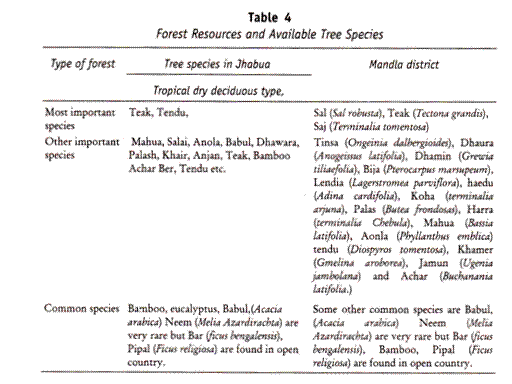This article throws light upon the seven main structures to be determined in plant community. The structures are: 1. Population Density 2. Cover and Dominance 3. Height of Plants 4. Weight of Plants 5. Volume Occupied by Plants 6. Frequency 7. Importance Value Index.
Structure # 1. Population Density:
The density of a species is the numerical representation of its Individual in an unit are or volume.
The density of a species refers to the adequacy of its different requirements and the availability of species.
Density is determined by the following formula:
Qualitatively, Density of a species tells for its abundance in the vegetation or community and could be expressed to one of the abundance classes as has already been discussed.
Structure # 2. Cover and Dominance:
The area of the land or ground covered by the aerial portion of the plant is referred to as cover. In a multistoried community such a study is conducted for every stratum of vegetation separately as there is overlapping of plants. For the trees, cover is generally studied as basal area which refers to the area of ground actually penetrated by the stem.
The mean basal area of trees is calculated by the following formula:
The basal area can be only a fraction of the total land area of the community but the canopy of a tree species may cover (canopy cover) several times of this land area due to the overlapping of canopies (Fig. 3.3).
The basal coverage or the area covered by a species is used to express its dominance. The higher the coverage the greater is the dominance. At first the average or mean basal area is calculated and then it is multiplied by the density of the species to determine the basal cover per unit area.
The Relative Dominance (R.Dm.) of a species can be calculated with the help of the following formula:
R.Dm= Total basal area of the species / Total basal area of all the specie
Structure # 3. Height of Plants:
Though the height of plant is a genetic character but, it is greatly modified depending upon the prevailing environmental conditions. In fact, the height of the plant is a good index of the suitability of the place for growing certain species of plants. It is also convenient to prepare growth curve based on height instead of weight, as the method does not required harvesting of the individuals under study.
Structure # 4. Weight of Plants:
Growth of a plant is also measured on the basis of its dry weight as it express the total biomass of the vegetation.
Structure # 5. Volume Occupied by Plants:
The structure of the vegetation can be studied also by measuring the volume of space occupied by the aerial parts of the plants.
Structure # 6. Frequency:
Individuals of a species are not evenly distributed within the Community. While, individuals of some species are found to grow in clumps of some species are found to grow in clumps or in continuous mats, individuals of different species indicate their adaptability to the local environment and also their success in reproduction.
Thus, the frequency of a species is expressed as the percentage occurrence of tis individuals in a number of observations.
The frequency of different species growing in a community can be determined with the help of the following formula:
For phytosociological purpose it is generally expressed as Relative Frequency and is determined with the following formula:
Raunkiaer (1934) recognized five frequency classes and expressed them in the form of presence and Constance as follows:
Structure # 7. Importance Value Index:
In order to express the ecological success of any species, values for its density, frequency, abundance, cover and any other such criteria do not yield the total picture. The overall picture of the importance of a species to its heterogeneous community can be obtained by adding the values of relative density (R.D.), relative dominance (R.Dm.) and relative frequency (R.F.).
The score out of the total value 300 is called the Importance Value Index (IVI) of the species. The different important species of a community are arranged always in the order of their decreasing IVI values. The IVI gives the complete phytosociological picture of a species in the community but does not give the dimension of relative density, relative dominance and relative frequency.
A phytography can help to remove this problem. In Lutz’s phytography (1928, 1930) a circle is made and then it is divided into four equal parts by two radial lines lying at right angles to each other. Divide the three radii from centre to circumference into 100 equal parts and the fourth radius into 300 parts.
Mark first three radii with R.D., R.Dm. and R.F. and the fourth as IVI. Place the values of R.D., R.Dm., R.F. and IVI of the species concerned on their respective arms, connect the these four points and that will give a quadrangular phytography for the species. Such a phytography gives an impression of ‘mass effect’ of several factors and at the same time any particular factor is readily isolated for study.


